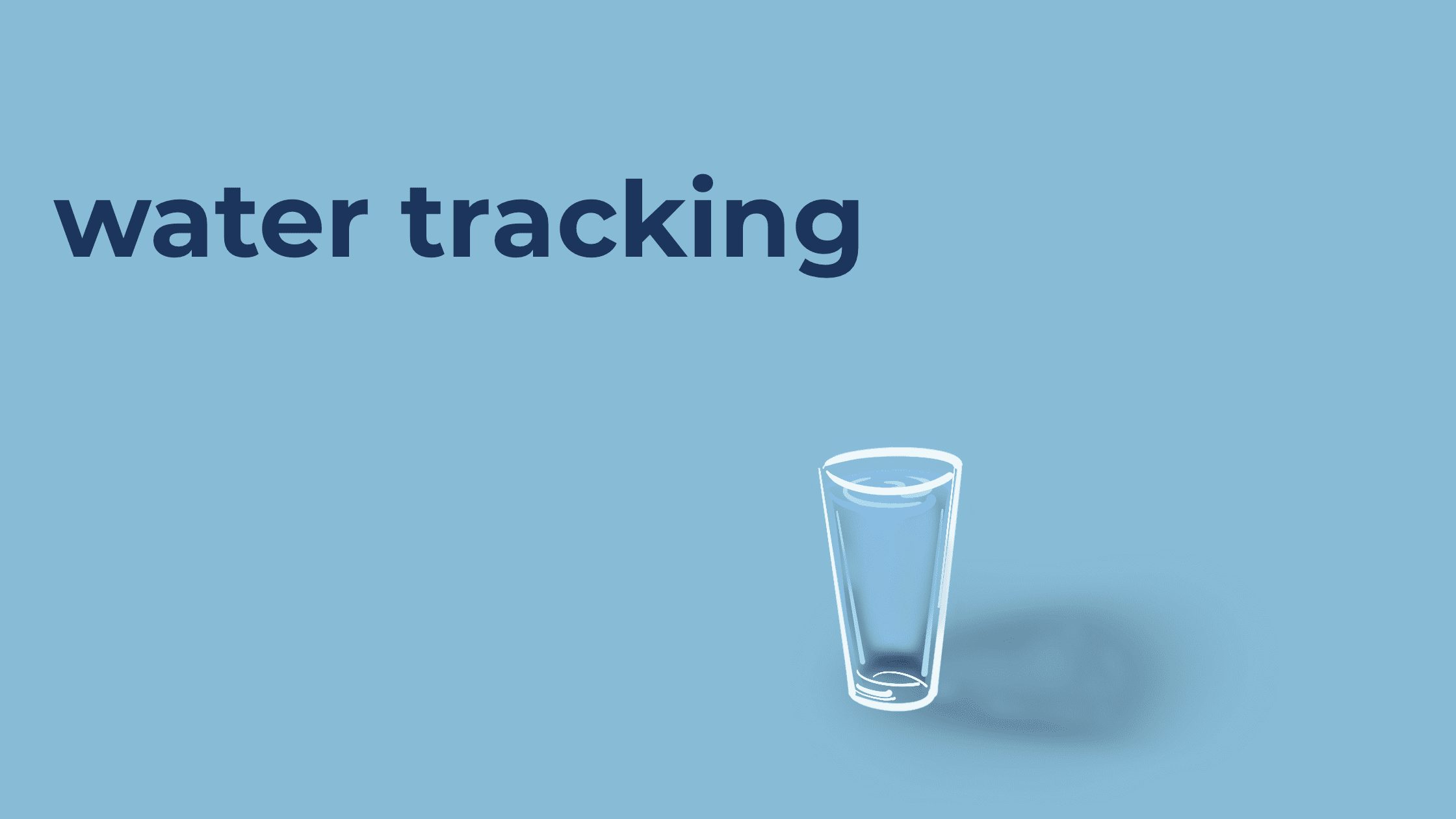
Water makes up about 60 percent of your body weight. Every cell in your body needs water to work properly. Water rids your body of wastes through urination, perspiration and bowel movements. It also keeps maintains body temperature, and lubricates and cushions your joints. It is needed for cellular processes and proper organ functioning, such as your heart. Your heart is constantly working and pumps approximately 2,000 gallons of blood a day. By staying hydrated and drinking more water, you are helping your body to function. This is why it is important to track water intake!
How does your body maintain fluid balance?
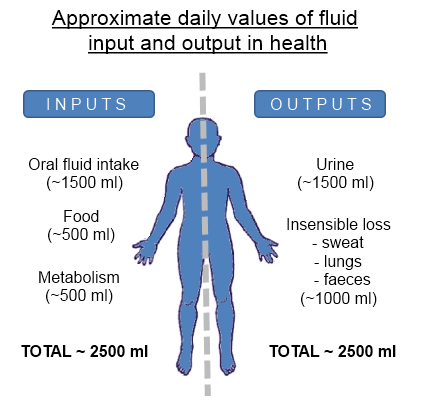
Fluid balance is part of homeostasis, a process during which the body tries to maintain a steady state. The amount of water lost from the body must equal the amount of water taken in. Water is necessary for all life on Earth. Humans can survive for 4 to 6 weeks without food but only for a few days without water.
In terms of water input, the body takes in fluids from the water you drink and the foods you eat. The total water input per day is approximately 2500 mL per day, which should be in balance with the body’s total water output. For water output, there are many ways that body eliminates fluids.
The majority of fluid output occurs via urination. Urination excretes approximately 1500 mL per day in the normal adult at resting state. Fluids are also eliminated via perspiration, which is the body’s mechanism for controlling body temperature. In addition, an adult loses approximately 100 mL per day of fluid through bowel movements. For females, an additional 50 mL per day is lost through vaginal secretions.
Track water intake to prevent dehydration
Dehydration occurs when you lose more fluid via perspiration, illness or urination than you consume in food and water. It can negatively affect your organs and bodily functions. For example, your cardiovascular system can be negatively affected. When you are dehydrated, the amount of blood circulating through your body decreases. Therefore, your heart must beat faster and this increases your heart rate and blood pressure.
When dehydration occurs, your blood retains more sodium causing it to become thicker. This makes it harder for your blood to circulate through your body and move nutrients to your body cells. It important to maintain healthy blood circulation by drinking more water to ensure that oxygen reaches your body cells.
Those most at risk for dehydration are the elderly, children, people with chronic illnesses and athletes. Severe dehydration can lead to problems ranging from swollen feet or a headache to life-threatening conditions such as heart attack or heat stroke. Signs of dehydration include extreme thirst, dry mouth, not urinating much, dark yellow urine, headaches and muscle cramps.
It is important to stay hydrated
Water not only helps your body to function properly, it also transports nutrients and waste, maintains your blood volume, ensures proper circulation, and regulates our body temperature. It helps to maintain the balance of bodily fluids, energize your muscles, maintain kidney functions and hydrate your skin.
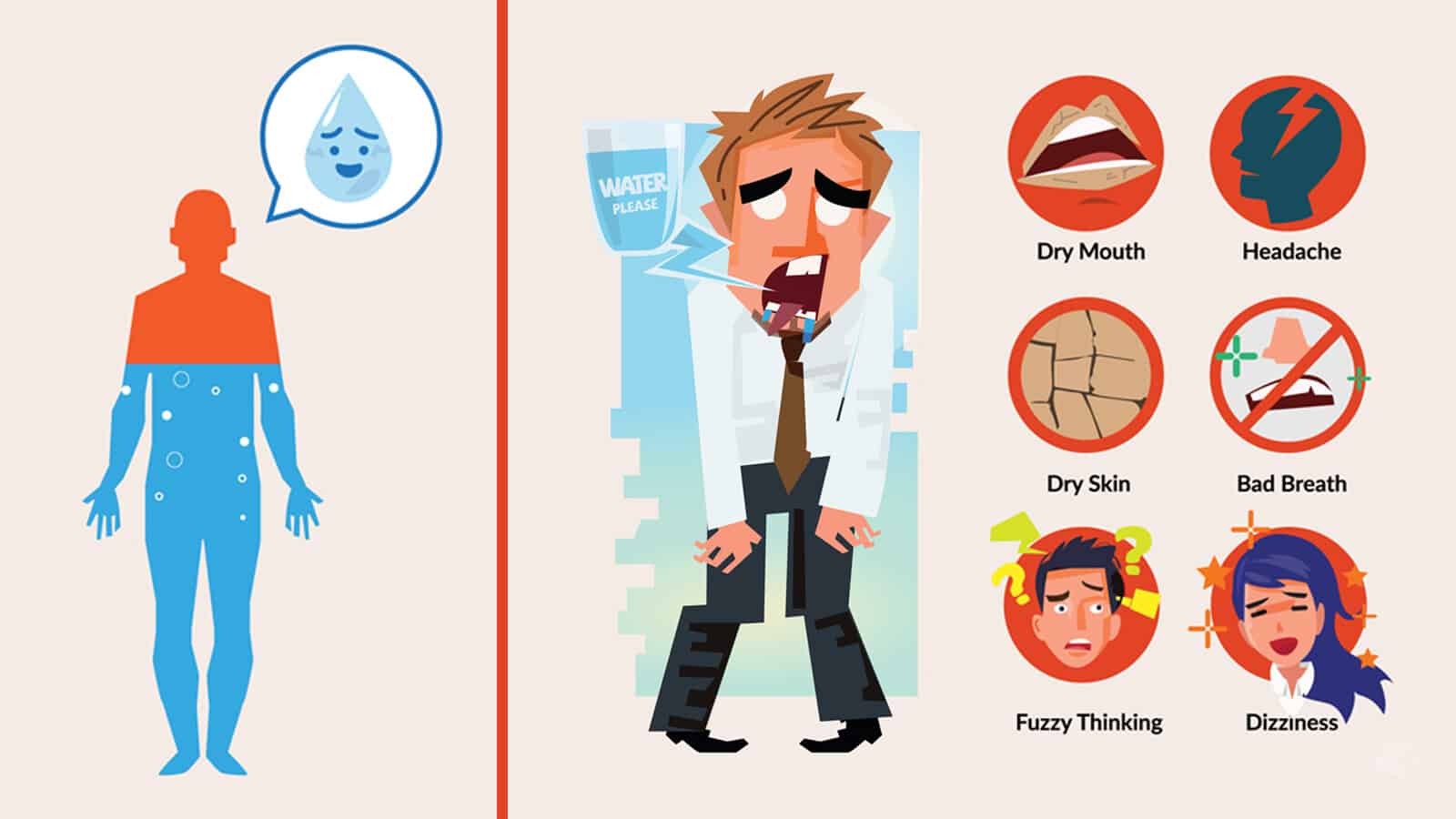
Ways to stay hydrated
Water is the best way to stay hydrated. Caffeinated drinks like coffee and soda drinks can also contribute to your daily water intake. However caffeine acts as a diuretic and can cause you to lose more fluids, and excess sugar in these drinks can inhibit the body from absorbing water.
Sports drinks are also high in sugars and calories and should be used only when you’re exercising intensely for long periods of time. These drinks help replace electrolytes lost through perspiration and sugar needed for energy during extreme exercise. Energy drinks generally contain large amounts of caffeine or other stimulants, sugar, and other additives. Alcoholic drinks are also diuretic it is important to drink a lot of water when consuming alcohol.
What affects your hydration?
The water needs of your body can be affected by many factors.
- Your level of exercise. If you do any activity that makes you sweat a lot, you need to drink extra water to compensate for the excess fluid loss. It is important to drink plenty of water before, during and after a workout. If exercise is intense and lasts more than an hour, a sports drink can replace the electrolytes that are lost through sweat. After a workout session, it is important to eat a healthy snack like orange slices, bananas or unsalted nuts to replenish energy and hydrate your body.
- What is the current health state of your body? Your body loses fluids when you have a fever, diarrhea and when you are vomiting. If you have certain medical conditions, such as diabetes, heart issues or a bladder infection, or if you are older than 50, or overweight, you may more at risk for dehydration and should take extra precautions to track water intake and drink plenty of water.
- What kind of environment do you live in? Does your environment make you more prone to dehydration? Hot or humid climates can make you sweat more often and therefore, you might require additional fluid intake. If you live in a hot or humid environment, it is important for you to track water intake and ensure you are drinking enough water everyday. You will need extra fluids if you are sitting in the sun on a hot or humid day, even if you aren’t exercising. Dehydration also can occur at high altitudes.
- Are you pregnant or currently breastfeeding? Women who are pregnant or breastfeeding need additional fluids to stay hydrated.
How much water should you be drinking?
You should be drinking around 2 litres of water per day. Water is an important part of all body functions and processes, including digestion and elimination. However, this recommendation can vary based on various factors such as diet, physical activity, body composition, and climate.
Tips for staying hydrated
Here are few tips to help you stay hydrated on a daily basis.
Track water intake using a water tracker app
A water tracker helps you keep track of how much water you drink and often is in the form of an app. A water tracker can provide a graphic record of eight glasses of water which are checked off as they are consumed. CareClinic is a free app that you can download on iOS and Android to track water intake on a daily basis. You can view your water intake over time in the form of easy-to-read graphs.
Get water through your food
Fruits and vegetables provide a lot of fluids to your diet. Clear soups and broths also contain a lot of fluids. Skim milk, and low-fat and no-added sugar yogurts and puddings also help hydration and nutrition without excessive calories. Melons and citrus fruits also have a very high water content.
Spread out your water intake throughout the day
It can be daunting to drink 2 litres or 8 glasses of water every day, especially if you are trying to do so in a short period of time. To help with this, ensure that you are spreading out your water intake throughout your day. You can use a water tracker app like CareClinic to keep track of your water intake throughout the day. This can help ensure that you drink your recommended 2 litres in total by the end of the day.
Carry a water bottle
If you are on the go, carrying a water bottle with you to refill can be extremely helpful for ensuring that you drink your recommended 2 litres every day.
Improve the taste of your water
Some individuals enjoy changing up the taste of their water. Add a wedge of lime or lemon to your water. This can help improve the taste and help you drink more water than you usually do. It is best to choose water over sugary beverages to hydrate yourself.
Track water intake with CareClinic
CareClinic is an easy to use app for those interested in tracking their water intake on a daily basis. The app can help with ensuring that drinking water consistently and tracking your water intake become part of your daily routine. CareClinic is your all in one healthcare management and wellness app. A wellness tracker app can be extremely useful for sticking to a daily routine, reducing stress and keeping track of your health and wellness activities, such as ensuring you meet your daily requirements for water intake. Sticking to a daily routine can help ensure that you are keeping up with your health goals.
You can use the CarePlan section to write out your goals for your water intake. For example, you can add “drink 2 litres of water every day” to your CarePlan. Then, you can create Check-In posts after you have made your initial care plan. Check-ins help you hold yourself accountable. Checking in hourly, daily, weekly, or as frequently as you prefer. Checking-in involves writing something in your diary, adding a measurement or uploading a relevant photo. When you check in, you can record how many glasses you drank.
Your check-in post will become visible in the Reports section once you save your check-in. This is where you can view your check in post along with other posts over time. This allows you to identify trends in your symptoms and daily health habits. It is good to view your health logs periodically as it will help you optimize for better outcomes by discovering new patterns in your data. CareClinic tries to spring up as many triggers, correlations, and alerts based on your journal entries. Metrics related to your health can be recorded as well. You can see how much water you are drinking over time every day in the form of graphs that are easy to read.
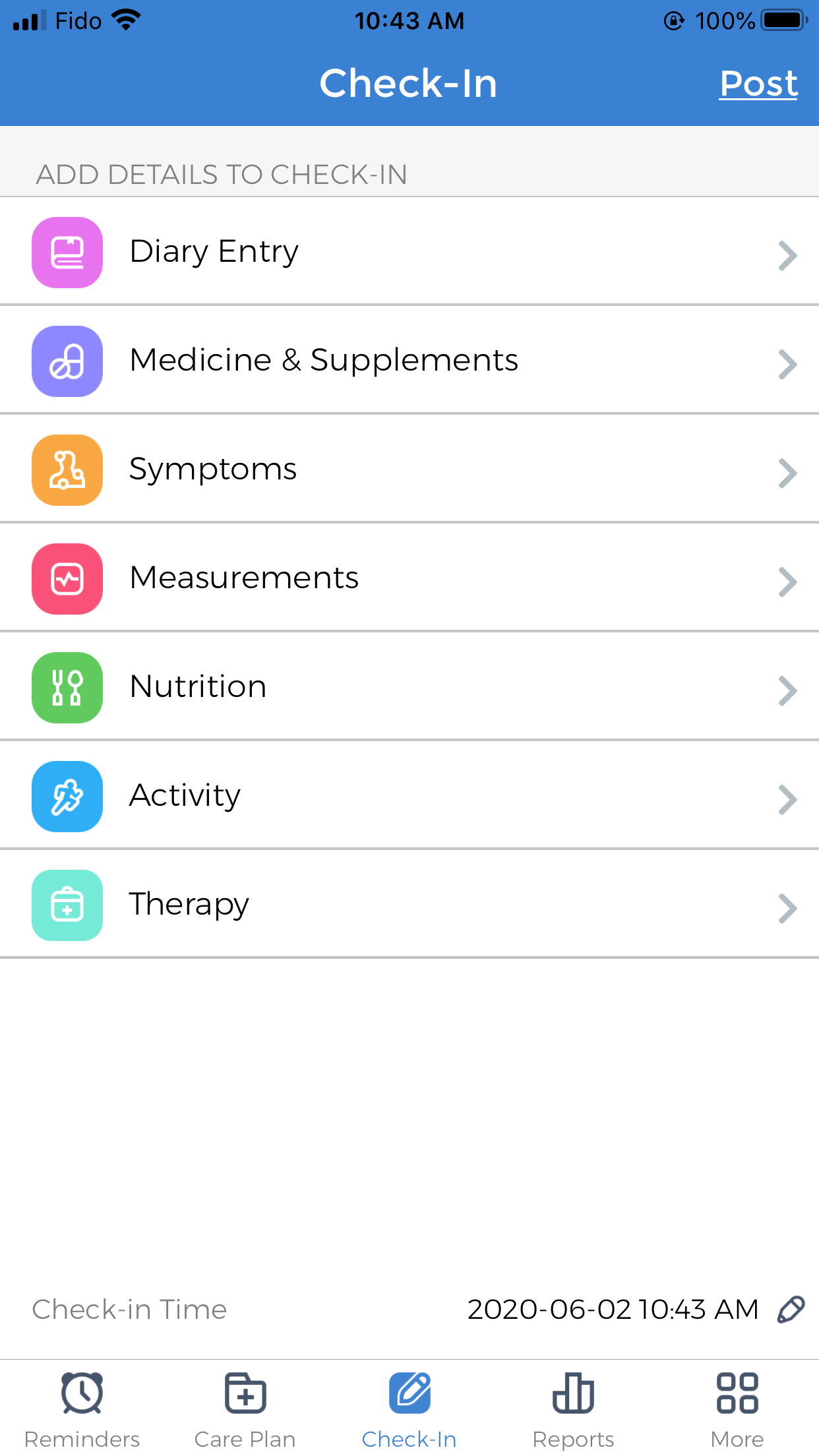
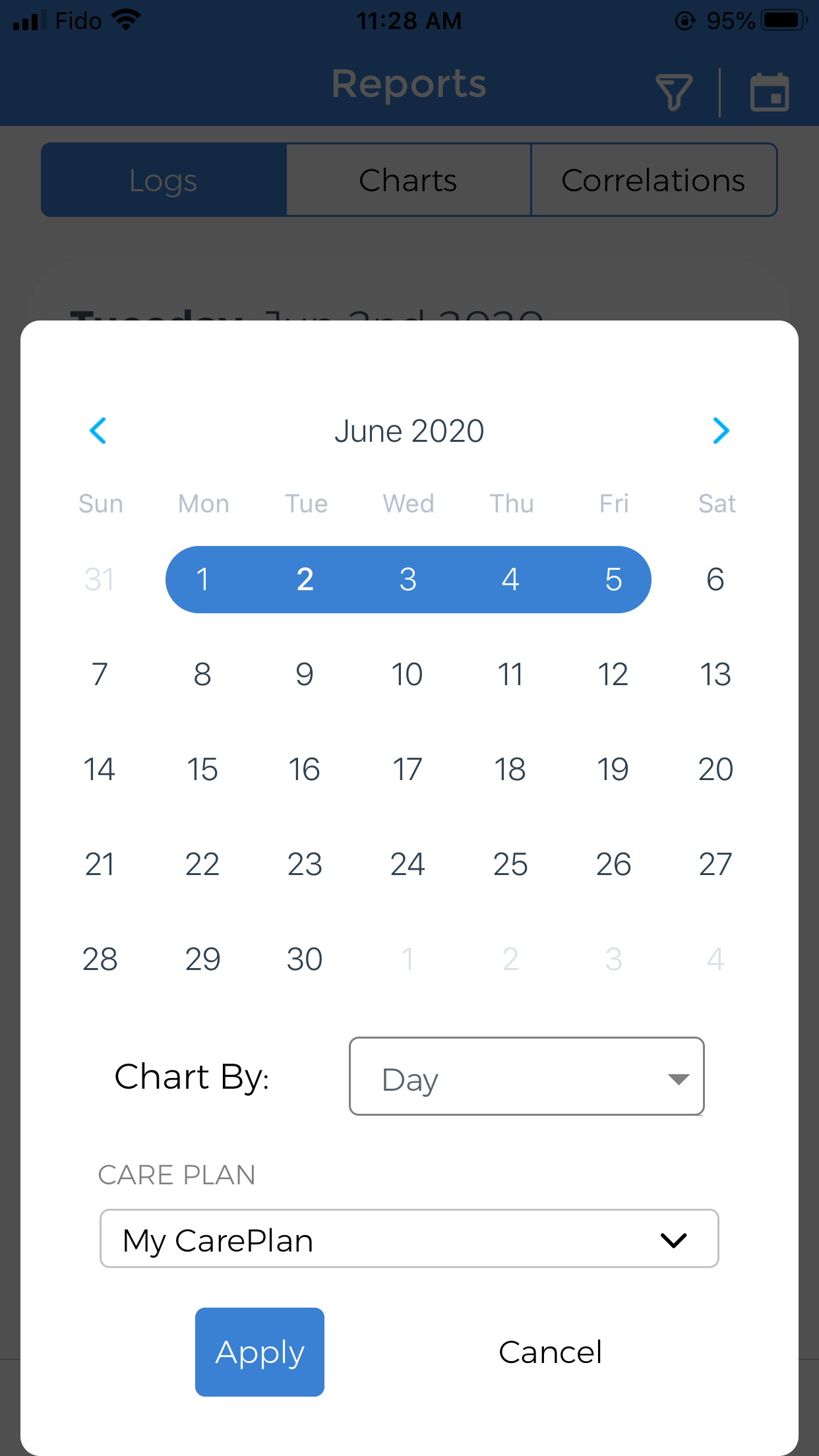
Viewing your CareClinic reports to track water intake
The reports can be used for discovering correlations between various health factors. An example would be finding correlations between drinking coffee and disturbed sleep. Another example may be looking at the relationship between your water intake and mood.
Other interesting things to pay attention to could include charts for medical adherence and vitals. Custom measurements, mood and symptoms are also beneficial to look over. The calendar will also show check-ins to other modalities as well. These include physical activity, therapies, medication adherence, and nutrition.
Your diary can sync with Apple Health and Google Fit as well. CareClinic is available on the web, iPhone or Android app. You can use CareClinic as the one platform where you track everything related to your health, including your water intake.
CareClinic, your all-in-one healthcare management app
CareClinic is your all in one wellness tracker. Aside from tracking daily water intake, the app can be used to help one maintain a healthier diet by ensuring that one keeps track of their daily nutrient intake. The app provides a Nutrition Plan so that users can keep track of what they are eating and the number of calories their meal is. Users can also record how much protein, fat and carbs each meal contains.
Reminders can also be sent through the app to ensure that users are eating a set amount of calories. Users can also set reminders to ensure that they are eating appropriate amounts from each food group. Aside from helping to improve eating habits, CareClinic can help one stick to a daily fitness routine. It allows users to maintain healthy levels of physical activity and normal sleeping habits.
You also set reminders for taking your medications. The pill reminder feature allows you to set up reminders for different drugs. You can adds information regarding the dosage, frequency, dosage form (pill, tablet, and capsule) and possible side effects.
The application can even act as an interaction tracker, outlining any potential drug-to-drug interactions. Once drug reminders have been created, the application will send push notifications to remind patients to take their specific medications. A medication calendar is setup automatically on the reminders screen of the App for the user to easily scroll through and monitor adherence and next reminders. If patients do not confirm having taken the medication by clicking on this notification, the app will continue to send reminders (snooze feature).
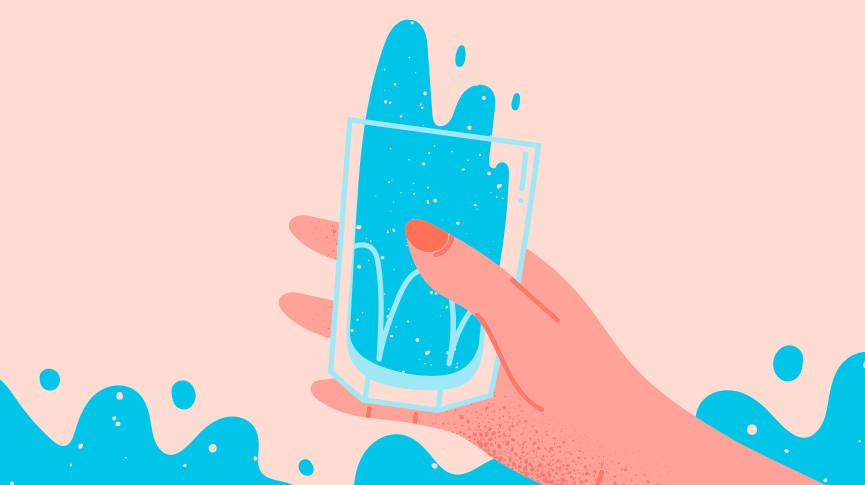
Track water intake using the CareClinic app
CareClinic is an easy to use app for those interested in tracking their water intake on a daily basis. Tracking your water is extremely important for ensuring that your body functions properly. The app can help with ensuring that drinking water consistently and tracking your water intake become part of your daily routine. You can set reminders to track water intake daily and ensure that you stick to your personal goals for daily water intake.


